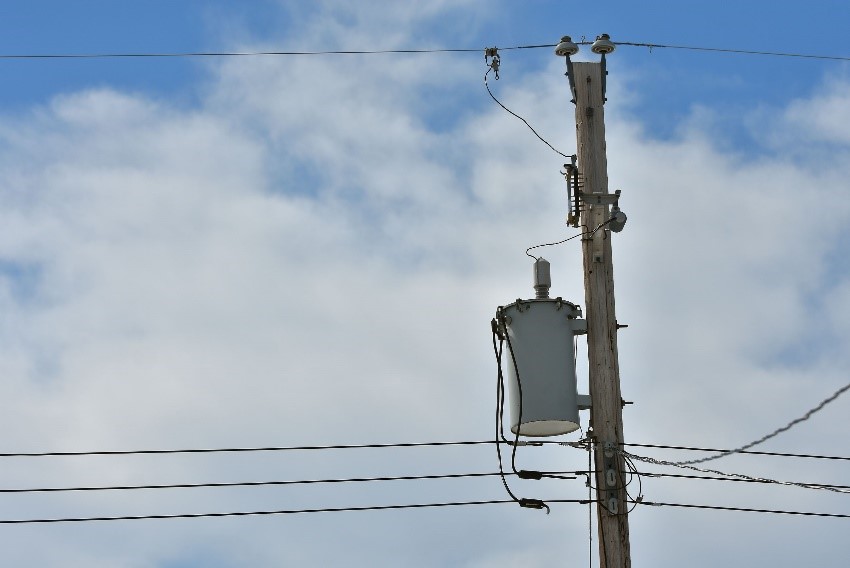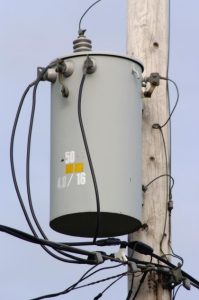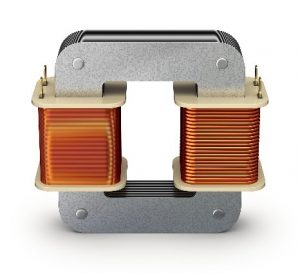Stepping Up and Stepping Down: Using Transformers to Change Voltages to Desired Levels

By: Daryl Wolfram | Mar 04, 2020
Transformers are used when power voltages need to be changed, or transformed, to other levels. Sometimes voltages need to be increased when sending power long distances. Other times, voltages need to be decreased for equipment that uses the power. Regardless of whether the voltages are being stepped up or stepped down, the same process of changing windings is used to transform voltages to different levels.
Voltage Level Changes
Power is usually generated at about 11KV (11,000 volts)

to 25KV. For this power to travel long distances, the voltages are often increased to 400 KV or more. Higher voltages have less power loss over distance, while lower voltages lose power more quickly.
As the transmission lines get closer to where the power will be used, the power is stepped down, lowering the voltage levels. Generally, power lines near residential houses will be stepped down to a level of about 13.8KV before using another transformer to drop the power again to the 240 volts that are needed for most residential structures.
Inside houses, the power may be stepped down yet again to power or charge electronics. Many cell phone chargers operate at 5 to 12 volts. This means that a transformer needs to be used to reduce the power from the outlet in the wall (around 120 volts) down to 5 to 12 volts.
These types of transformers use magnetic fields and induction to change voltage levels.
Magnetism

If you take two magnets and try to push them together on the same magnetic pole (north to north or south to south), you will feel them push away from each other. That is because invisible lines of force are pushing against each other and forcing the magnets apart.
When an electrical conductor is energized, an electric field is generated around the wire, similar to fields around magnets. These invisible lines of force impact and push on the magnetic fields of other conductors, metal, and magnets around them. When energized conductors are coiled, the strength of the magnetic field increases. The more times the conductor is coiled, the stronger the magnetic field becomes. The measurement of this magnetic force is called magnetic flux.
Induction
When voltage is transformed using induction, the conductor from one voltage level does not directly contact the conductor for the other voltage level. The magnetic force from the energized conductor creates magnetic flux in the core that induces power in the other winding.
Coil Windings
Transformers change voltages by altering the number of windings on each side of the core.
A primary coil contains the winded conductors from a power source. The secondary coil contains the winded conductors that are going to the equipment that is to be used. By changing the amount of times the conductor is winded on either side of the core, the amount of power leaving the transformer can be manipulated. In order to step down a transformer, the amount of windings on the secondary side will be less than the amount of windings on the primary side.
For instance, if you wanted to take the power from a 120-volt outlet and step it down for a 12-volt charger, you would need to have less windings on the side of the transformer that goes to the charger. In this situation, there would be 10 times more windings on the primary power side (120 volts) than the secondary power side (12 volts). So, if the primary side had 1000 windings, the secondary side would need 100 windings.
Other voltage levels can be attained by altering the number of windings on either side of the transformer.


